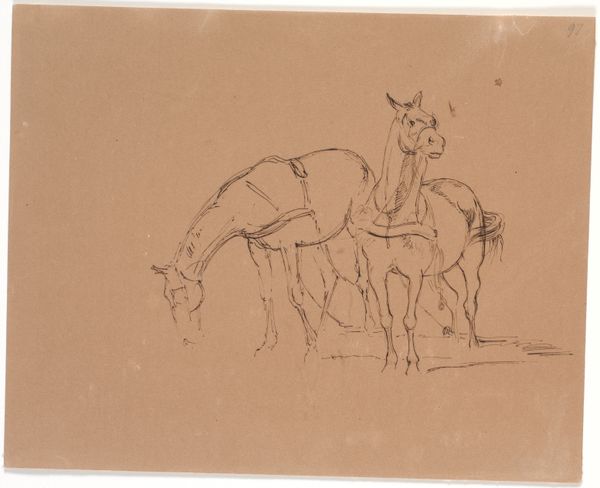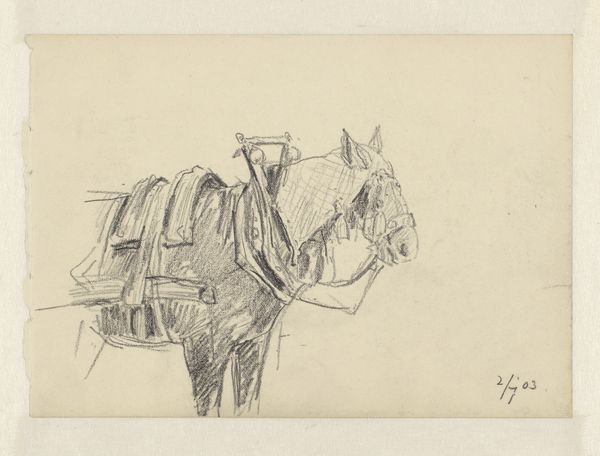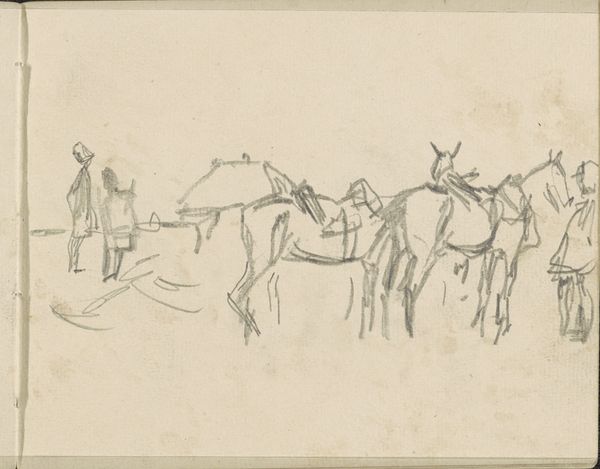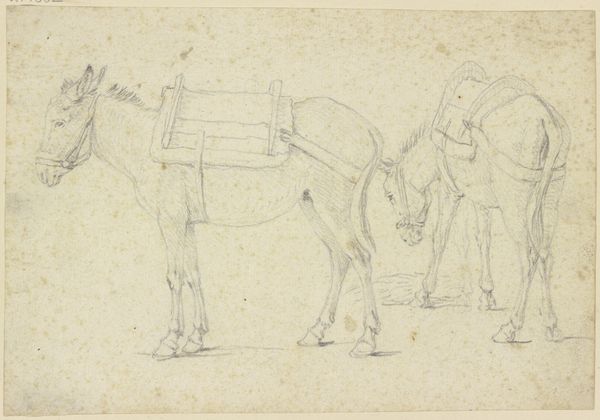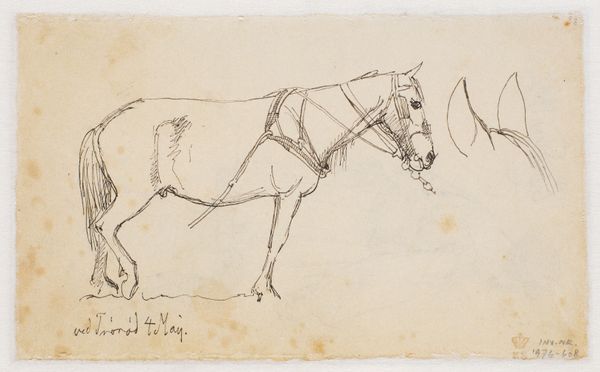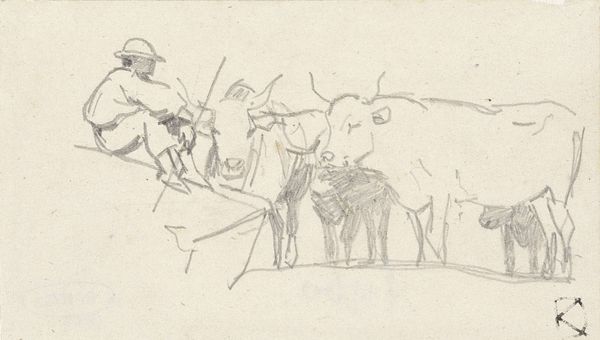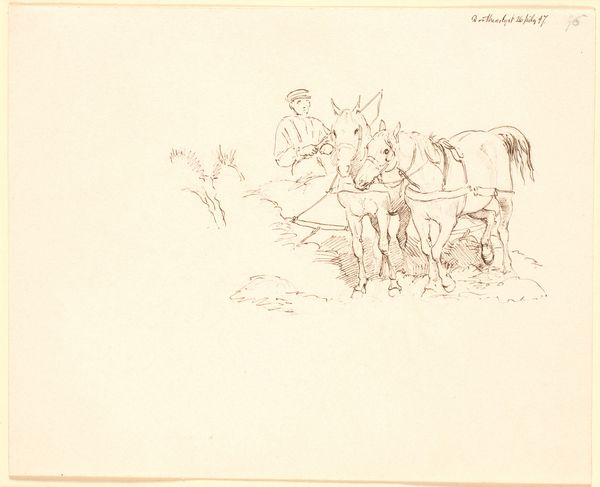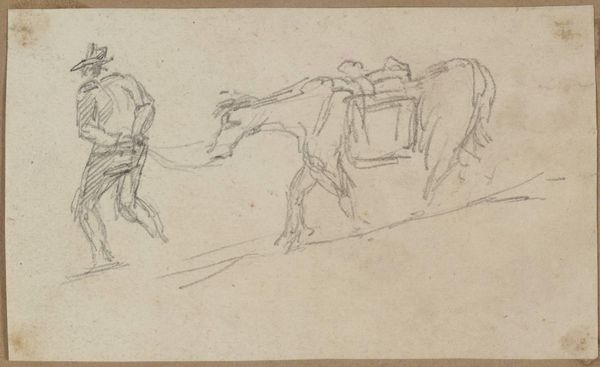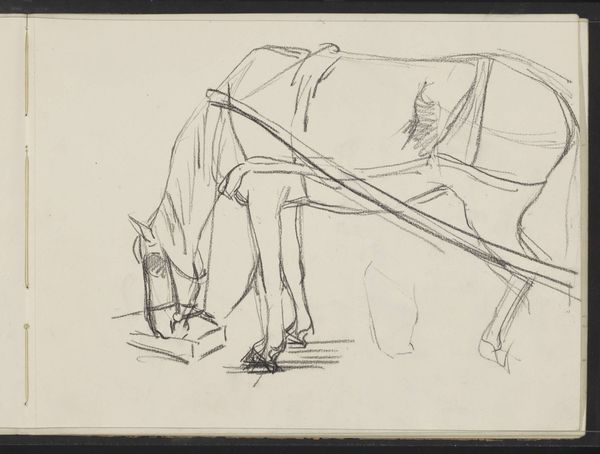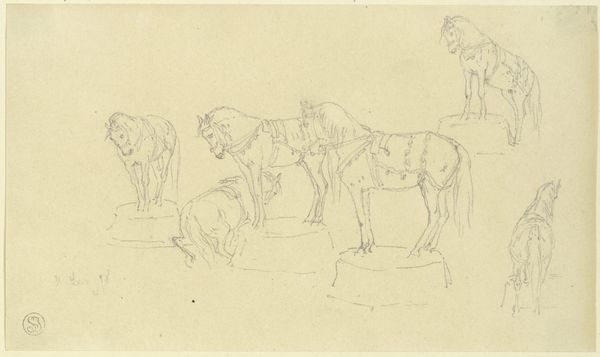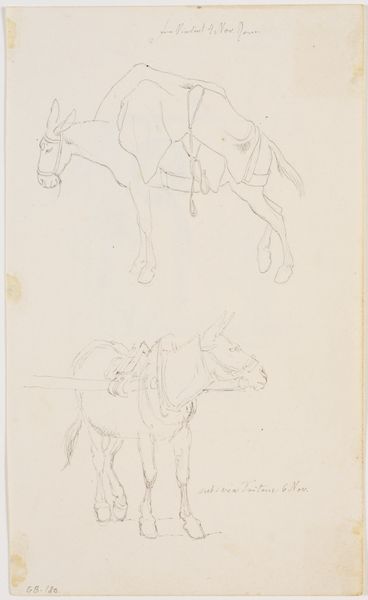
drawing, pencil
#
drawing
#
landscape
#
figuration
#
pencil
#
horse
#
realism
Dimensions: height 139 mm, width 207 mm
Copyright: Rijks Museum: Open Domain
Curator: This drawing is by Jan Hoynck van Papendrecht, likely created sometime between 1868 and 1933. It’s titled "Man bij aangelijnd paard," which translates to "Man with a Leashed Horse." Editor: There's an incredible rawness to this piece; almost primal in its directness. The lines are so immediate, almost violently scribbled at times. The subdued value range also suggests somber themes. Curator: Let's think about the artist’s choice of materials. Papendrecht used pencil on paper, a readily accessible medium that speaks to the accessibility of the scene itself—man and beast, united by labor and perhaps subservience. The ubiquity of these materials democratizes artmaking itself. Editor: It is a compelling formal juxtaposition of the intricate network of lines against the backdrop of relatively untouched space. Consider how these sparse strokes powerfully define form and mass. The relationship between the dark pencil lines and empty page is just masterfully balanced to evoke a sense of stillness and contained energy. Curator: The leash becomes particularly potent in this reading. It signifies control, yes, but also the tangible connection between human and animal in the context of agricultural or even military labor practices during Papendrecht’s time. Were they being shipped? Was the man tasked with controlling it under someone else’s order? The sketch invites reflection on such questions, wouldn’t you say? Editor: Indeed! While the social aspect informs our understanding, let's not underestimate the psychological intensity created by this compositional choice, and Papendrecht's use of line and form that generates feelings of isolation and connection. Curator: Thank you. Examining artwork this way makes one more cognizant of artistic practices across classes. Editor: Agreed. The experience leaves you with something, to feel this piece is a testament of drawing, and visual form's expressive potentials.
Comments
No comments
Be the first to comment and join the conversation on the ultimate creative platform.

